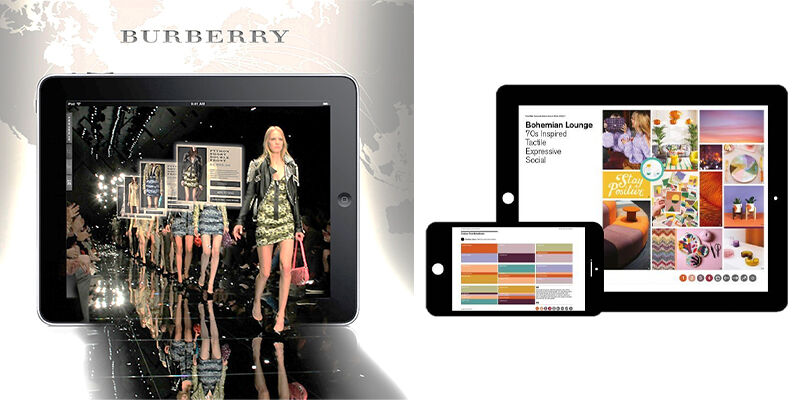
Blog

As part of a module in their degree, second year students on our BA (Hons) Textile Design course have written about contemporary issues affecting the textile industry, with particular emphasis on a professional job role and industry sector of their choice.
Lecturer Sarah Burton commented: “This project always provides a great opportunity for students to learn more about global issues affecting the textile industry, as well as gain further understanding of a specific job role that they aspire towards. This year, as the ongoing effects of the Covid-19 pandemic on the industry continue to be felt, students have questioned what the ‘new normal’ is for our industry and considered how designers and creatives will need to adapt in the ever-changing environment."
Here, Edita Sedoikina considers the effects of the pandemic on Trend Forecasters and how their roles have changed.
Covid-19 in an instance changed the lives of everyone. The whole world collapsed and moved into uncertainty. The things that we would see as unpredictable, have become the new normal.
As we know this crisis hit hard on all types of industry sectors creating challenges, but also opportunities which benefited some businesses. Trend forecasting roles, as the most vital in the textile industry, had experienced changes in their working habit. Trend forecasters are responsible for predicting future styles, making informed predictions based on what they see and research. However, during this tough time, forecasters were focused on how businesses can be saved. This was their main priority as businesses started to use forecasters as a risk management service, to ensure they were making the right decisions.
During national lockdowns, forecasters faced challenges which needed them to work at a faster pace. Following sudden changes, clients and retailers were looking out for extra information meaning forecasters had to form predictions much quicker than usual. Emily Gordon-Smith, Director of Consumer Product and Trend Analysis for Stylus, mentioned she spent much more time with clients than she used to: “Last week, I did 13 presentations directly to different brands, retailers and different businesses, compared to two client meetings per week”.
This must have been quite difficult as they were forming more detailed presentations, by having to find information and inspiration in different ways. As crucial events such as trade shows and fashion weeks were cancelled, they only had digital platforms to connect with keynote speakers: podcasts, interviews and so on. In addition, they had to produce weekly updates instead of monthly, and run webinars. Forecasters had to spend more time on generating information at no extra cost to satisfy their clients. Thus, this had affected their earnings.

Left: Burberry, Runway to Reality (Rachal Egan 2012). Right: A/W 20/21 Trend Book
Covid has made the world stop, rethink and reshape. It gave opportunities for forecasters to work in ways they did not imagine they would be. For example, connecting globally to discuss trends without needing to visit other countries. This opened possibilities for more people around the world to be involved, creating a much stronger global vision and bringing together more opinions and resources. Additionally, connecting more with live events and virtual showrooms brought people together through new communication platforms, building stronger relationships with industry and creating contacts which would sustain longer in terms of future partnerships. And lastly, creating and delivering presentations digitally and remotely, has opened a new style of working for the future.
The role of a forecaster has changed from predicting the future trends to becoming the main source of advice to guide and help rescue brands who were at the edge of collapsing.
The pandemic has certainly reshaped our world and forced people to find other methods of working together. Therefore, thinking about the future of trend forecasting, how will it look in a post-Covid world? We can see forecasting being partially digital in their working sector. Besides, technology is constantly evolving which we assume can make forecasters work mode more approachable and sustainable from research, communication, and sampling meaning there would be no need to travel as much. They would be prepared for the future to work remotely and confidently, becoming more resilient as an industry and feeling more secure if another similar situation arises.




